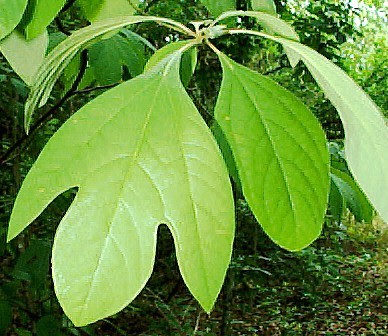Contents
Uses
- Despite serious safety concerns, sassafras is used for urinary tract disorders, swelling in the nose and throat, syphilis, bronchitis, high blood pressure in older people, gout, arthritis, skin problems, and cancer. It is also used as a tonic and “blood purifier.”
- Some people apply sassafras directly to the skin to treat skin problems, achy joints (rheumatism), swollen eyes, sprains, and insect bites or stings. Sassafras oil is also applied to the skin to kill germs and head lice.
- In beverages and candy, sassafras was used in the past to flavor root beer. It was also used as a tea. But sassafras tea contains a lot of safrole, the chemical in sassafras that makes it poisonous. One cup of tea made with 2.5 grams of sassafras contains about 200 mg of safrole. That equates to a dose of about 3 mg of safrole per 1 kg of body weight. This is about 4.5 times the dose that researchers think is poisonous. So, in 1976, the US Food and Drug Administration (FDA) ruled that sassafras could no longer be sold as sassafras tea.
Cautions
- Sassafras seems safe in foods and beverages if it is “safrole-free.”
- However, it is UNSAFE for use as a medicine. Don’t take it by mouth or put it on your skin. The safrole in sassafras root bark and oil can cause cancer and liver damage. Consuming just 5 mL of sassafras oil can kill an adult. Even “safrole-free” sassafras used in medicinal amounts has been linked with tumors.
- Sassafras can cause sweating and hot flashes. High amounts can cause vomiting, high blood pressure, hallucinations, and more severe side effects. It can cause skin rashes when used on the skin.
- It is UNSAFE for anyone to use sassafras in medicinal amounts
- Pregnancy and breast-feeding: Don’t use sassafras if you are pregnant. There is evidence that sassafras oil might cause a miscarriage.
- Children: Sassafras is UNSAFE for children. A few drops of sassafras oil may be deadly.
- Surgery: In medicinal amounts, sassafras can slow down the central nervous system. This means it can cause sleepiness and drowsiness. When combined with anesthesia and other medications used during and after surgery, it might slow down the central nervous system too much. Stop using sassafras at least 2 weeks before a scheduled surgery.
- Urinary tract conditions: Sassafras might make these conditions worse.
Interactions
Moderate Interaction Be cautious with this combination:
- Sedative medications (CNS depressants) interacts with SASSAFRAS: Sassafras might cause sleepiness and drowsiness. Medications that cause sleepiness are called sedatives. Taking sassafras along with sedative medications might cause too much sleepiness.
- Some sedative medications include clonazepam (Klonopin), lorazepam (Ativan), phenobarbital (Donnatal), zolpidem (Ambien), and others.
Other Names
Ague Tree, Bois de Cannelle, Cinnamon Wood, Common Sassafras, Kuntze Saloop, Laurier des Iroquois, Laurus albida, Saloop, Sasafras, Sassafrax, Sassafras albidum, Sassafras officinale, Sassafras variifolium, Saxifrax.
References
Source: WebMD, “Sasafras”, www.webmd.com/vitamins-supplements/

